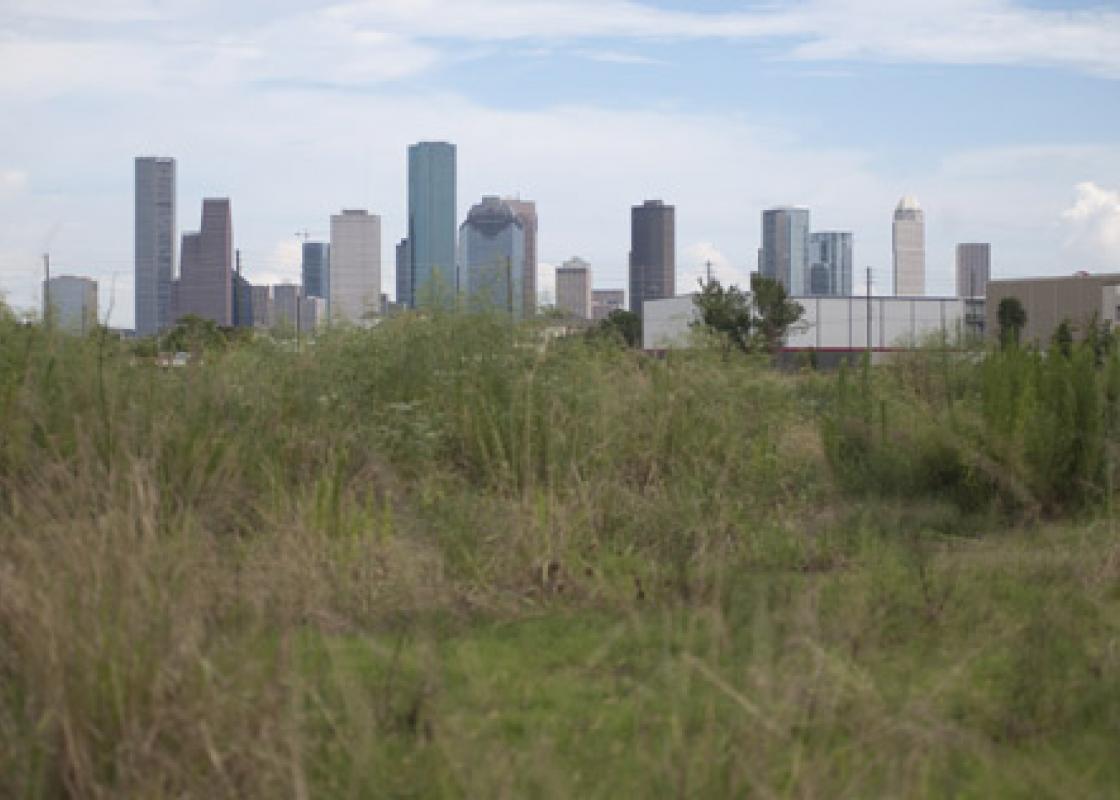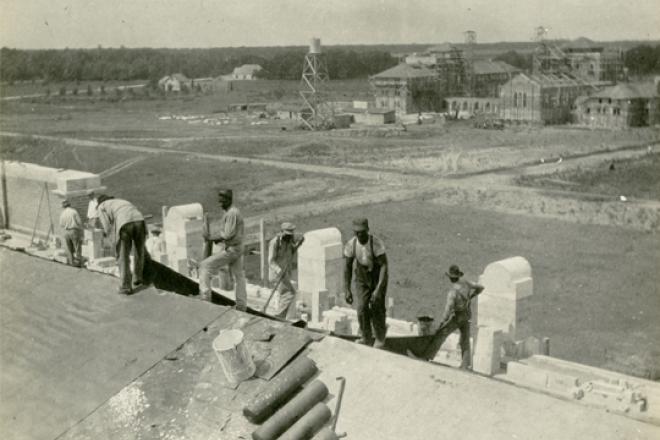Houston city council passed a $6 million incentive for the new Washington Heights shopping center to include "landscaping, a bike trail, and widening, repaving and improving drainage." The center, which is anchored by a Walmart, has stirred up an unusual degree of controversy and reveals the forces shaping (or intentionally not shaping) the city’s evolution without zoning. OffCite will examine Washington Heights in a series of posts. This first one will look at the development critically from the standpoint of opponents.
Opposition to the new Washington Heights development argues that it is a troubling and regressive chapter in the development of Houston’s urban core. Instead of high-density, mixed-use, neighborhood-scaled planning that would strengthen the character of the city, Washington Heights represents the low-density, box-and-strip retail that dominates and defines suburbia.
The site itself is somewhat enigmatic. Historically industrial, it is a transitional node between several neighborhoods. While technically in the West End, it has a strong relationship to the Heights and serves as a primary thoroughfare connecting that neighborhood with Washington Avenue and Montrose. Relatively quiet residences and light industry lie to the west and I-10 is directly north.
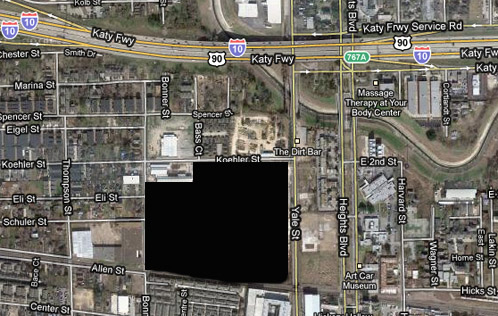
Undoubtedly, the backlash to the development has been exacerbated by the fact that the retail center is anchored by the perennially unpopular Walmart. The stakes are raised by the fact that the City of Houston has now awarded the Ainbinder Heights LLC, the developer of the project, up to $6 million in reimbursements for infrastructural improvements in and around the 23-acre site.
Broadly speaking, the opposition to Washington Heights breaks down into two camps: 1) those who dislike the tenant and will antagonize, in whatever way possible, the progress of the development and 2) a more moderate group, who are resigned to the fact that the project is happening, but oppose what they view as poor, status quo development.
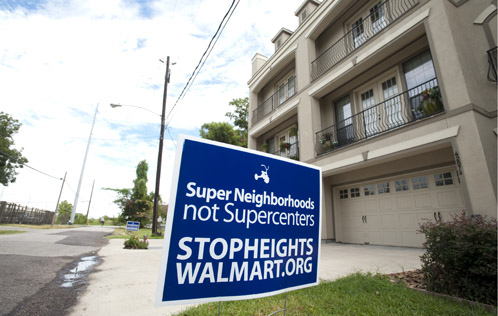
Protest signs within site of the proposed Walmart location.
The first position is best represented by the 6,000 member Facebook group Stop the Heights Walmart! The group is reminiscent of the opposition to the construction of the Ashby High-Rise and indeed employs some of the same grass-roots tactics necessary to fight unpopular projects in a city with no zoning. However, in this case Wal-Mart presents a well-known target and a visitor to stopheightswalmart.org can efficiently navigate to a fact sheet clearly outlining the negative track record the retailer has regarding traffic, crime, taxes, and employment.
The second camp consists of community activists and design professionals seeking a way to make Washington Heights more positive for all parties by better addressing issues such as energy use, storm water management, urban heat island, pedestrian scaling, neighborhood compatibility, shared parking, and connection to public transportation. For instance, a tighter site plan with wide sidewalks and a door by the street, rather than one at the end of a long parking lot, would help pedestrians. While some progress has been made, the distance between the community that endorses sustainable urban development and the developers appears great. In a meeting with the developer, neighborhood resident and architect Monica Savino asked if they had considered vertical parking. “They just sat there for a long time without saying anything,” recalls Savino. Finally, they just said “no.”
This hesitation is incredibly disturbing. It suggests two equally bad scenarios: either the developers have actually never considered even the most basic motion toward a project that might ultimately be called “sustainable” OR they are coyly answering the uncomfortable questions posed by concerned citizens, knowing ultimately they are unchecked and may proceed as they desire. This situation positions those interested in realizing the vision of a more thoughtful and planned city against those obligated to do what makes business sense. In Houston, virtually all the power is given to the latter.
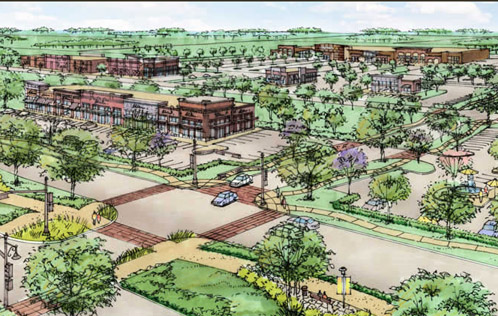
The Washington Heights shopping center rendering shows a prairie rather than a city.
In terms of vision, Washington Heights shopping center remains regrettably lacking in ideas. It is a suburban box and strip clad in slightly better materials than the typical Walmart, which seem to be the building’s only acknowledgment that it occupies a significant site. The disconnection of the architecture from its context comes through strongly in the developer’s renderings, which seem to portray a project in the middle of the Katy Prairie, rather than Houston’s inner-loop. The site plan reveals a tolerance for waste that serves as a painful reminder as to how little land close to the center of the city is valued.
Is there a better way? The recent planning of an H-E-B in Montrose has seen the strange bedfellows of developers and community activists working together to develop a plan that suits the neighborhood and the retailer. Skeptics are quick to point out that H-E-B has not made any binding commitments and unless placated with major outside funding will proceed as they would have from the outset. Others remain optimistic, citing H-E-B ongoing efforts to work with local residents, including an upcoming presentation of three plans upon which the community will be asked to vote.
Ultimately, Washington Heights is suburban-style development on an urban site, which over the long term will be another dysfunctional patch the urban fabric of Houston. Is it better than an abandoned steel fabrication site? Probably. Does it improve Houston in any way beyond expanding the tax base, providing a few more jobs and additional (arguably redundant) retail? Probably not. Could this development have been planned in such a way as to yield a much more progressive product---one that Houstonians could feel good about contributing their tax dollars to? Absolutely.


